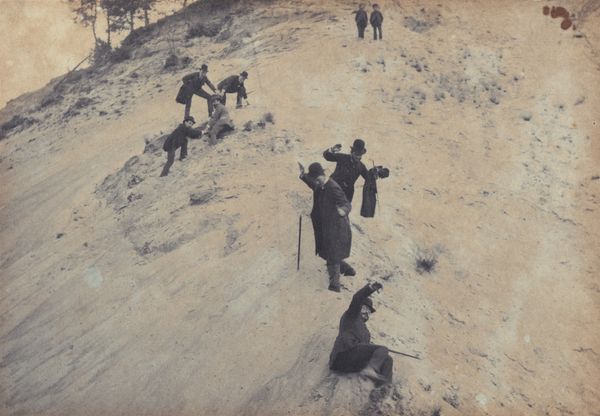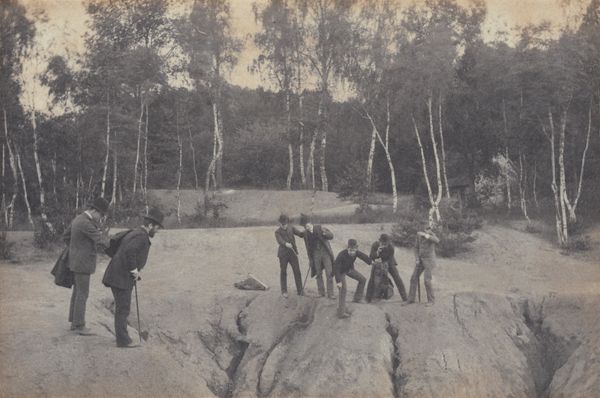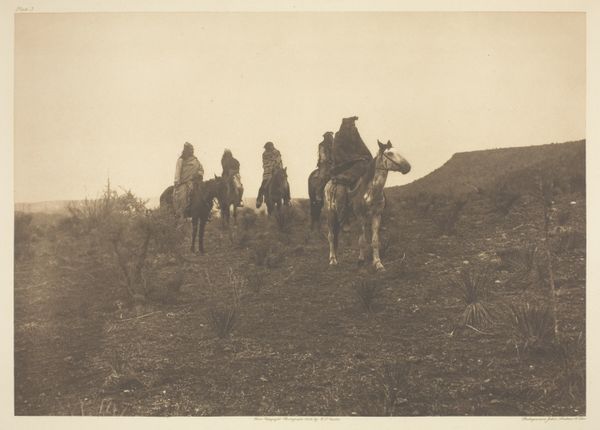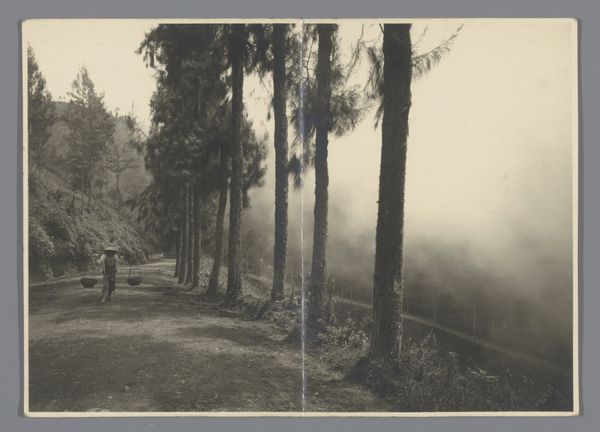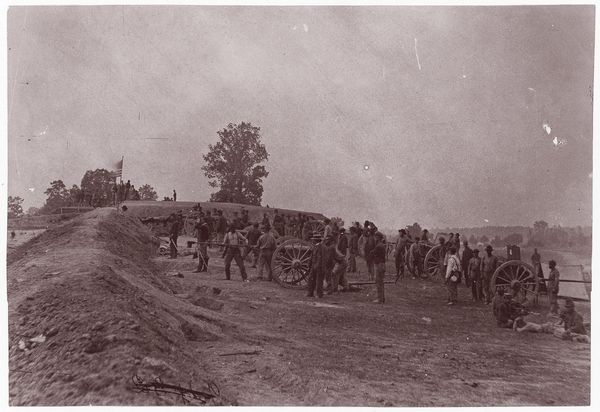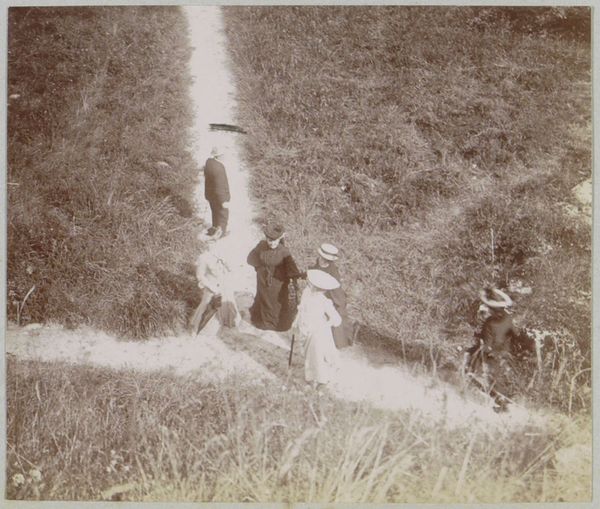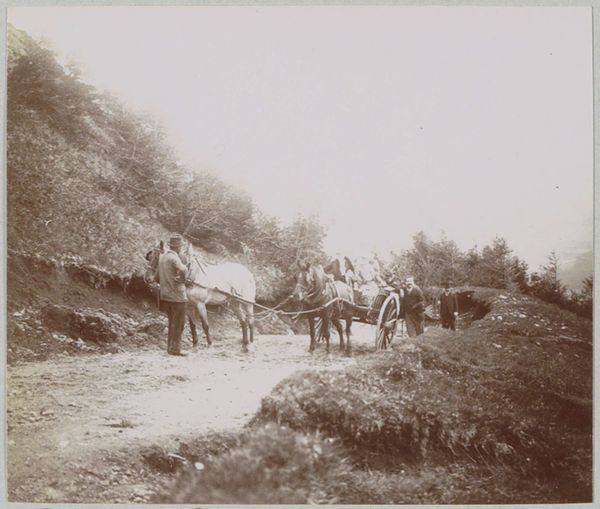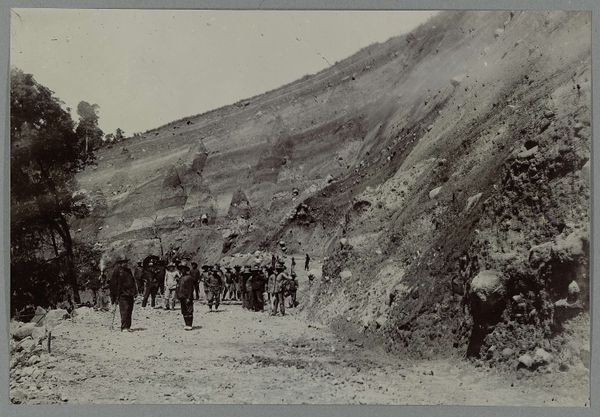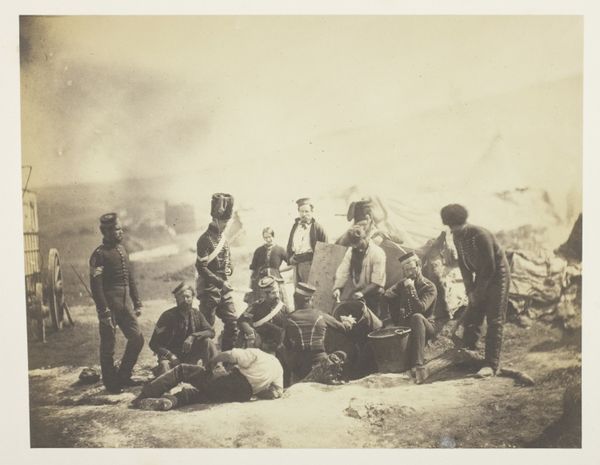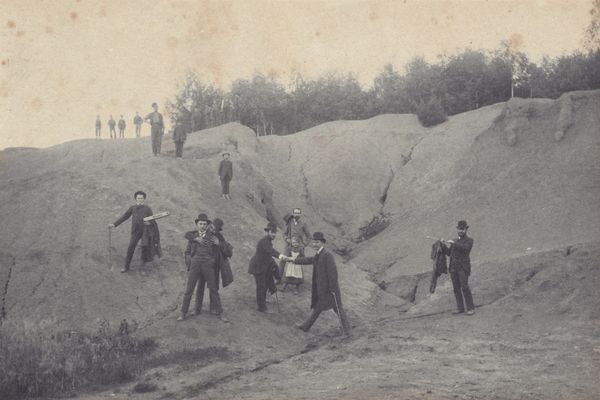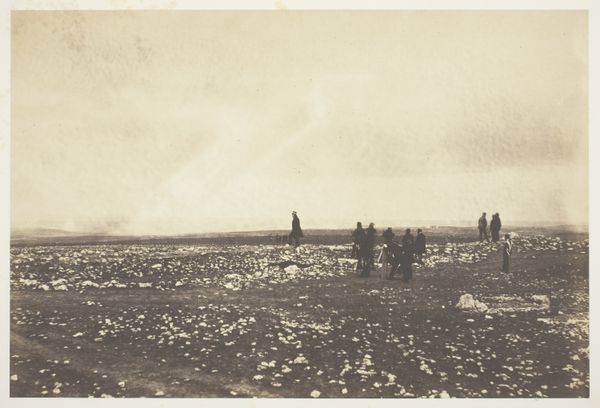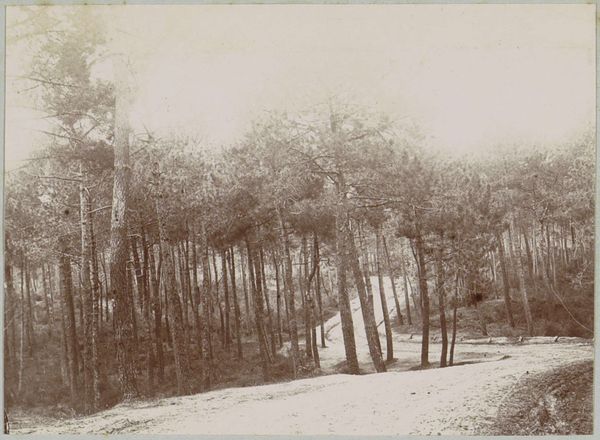
photography, gelatin-silver-print
#
portrait
#
16_19th-century
#
pictorialism
#
landscape
#
charcoal drawing
#
charcoal art
#
photography
#
gelatin-silver-print
#
charcoal
Dimensions: image: 9.8 x 13.2 cm (3 7/8 x 5 3/16 in.) page size: 13.6 x 22 cm (5 3/8 x 8 11/16 in.)
Copyright: National Gallery of Art: CC0 1.0
Editor: So here we have Alfred Stieglitz's "Freienwalde a. O.," a gelatin silver print from 1886. It depicts a group of men ascending a large, sandy hill. I’m struck by the texture and the starkness of the landscape. What do you see in this piece? Curator: Well, immediately, I see the interplay between labor and leisure in the late 19th century. These men, are they working? Or is this recreation? Look at their clothing. It’s not typical work attire, yet the climb looks strenuous. The materiality of the image itself—the gelatin silver print— speaks to a particular moment in photographic production. Mass reproducibility was making art more accessible to the burgeoning middle class, but how did that shift affect the definition of ‘art’ itself? Editor: That’s fascinating! I hadn't considered the social implications of the printmaking process itself. So, the fact that it’s a photograph, reproducible and relatively inexpensive compared to painting, changes its meaning? Curator: Absolutely! It removes the unique "aura" associated with handcrafted artwork, which deeply questions artistic authenticity. Who has access to creating and consuming art like this? Also, the landscape: is it being exploited for resources, or simply being 'consumed' visually? Editor: So, you are saying that we should question even the very fact that this image can exist? Curator: Exactly! Stieglitz isn't just showing us a landscape. He is capturing the human mark and interaction, how resources and new artistic media are perceived. It challenges notions of "high art" and encourages us to think about art as part of a much wider socioeconomic fabric. Editor: That gives me a whole new perspective on it. It's no longer just a scene; it's a commentary. Curator: Indeed. I hope that we look at any piece in a broader societal context. Editor: It sure gives more to think about!
Comments
No comments
Be the first to comment and join the conversation on the ultimate creative platform.
